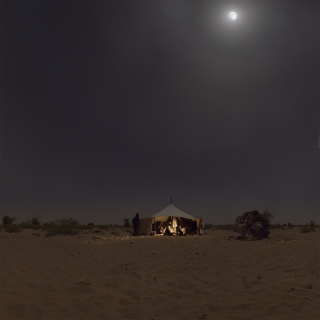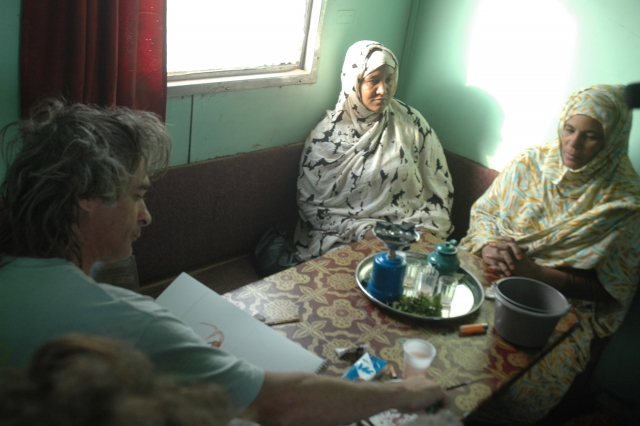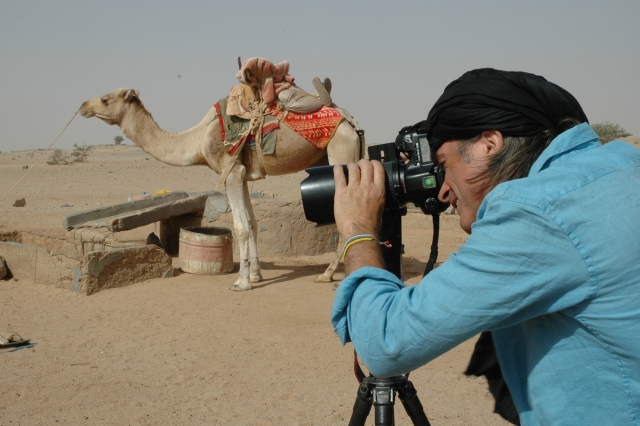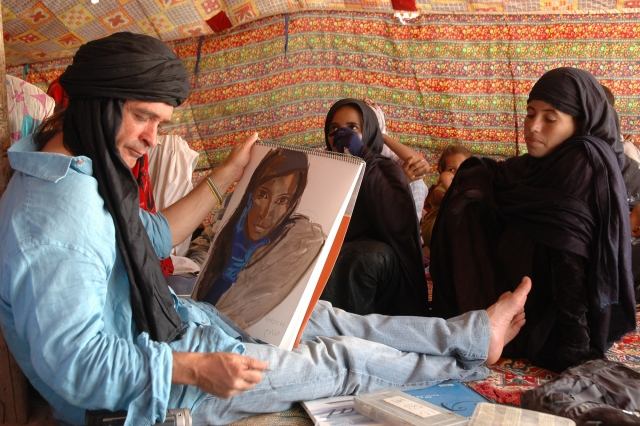Zouérat and the desert
“Our grandfather was a soldier in the colonial army. When he retired, he returned to live in the desert. He had herds of camels and goats, and a palm grove, and he took care of our education…” Zeynabou
Abstracts
"When we happened upon this band of merry, mischievous girls, our wanderings in the desert came to a halt. They were sisters, cousins, neighbors, I don’t know any more, and they lived in the same camp with five or six tents. The girls showed a touching appreciation of their chibani, the old chief of their clan, their grandfather. 'He’ll die soon and we’ll never see him again, nor anyone like him,' was the opinion of my interpreter when we headed back to our crazy world, forever stripped of this wisdom based on simplicity.
(…) One day, we accompanied Fatis to her workplace at the Zouerate mine, on the fringes of the Sahrawi Desert, at Mauritania’s northern border with Algeria and Morocco. A few months ago, groups of African migrants from Agadez in Niger or Gao in Mali were dropped off near the mining town by Tuareg people smugglers. Especially at night, the lights of the gigantic mine can look convincingly like a Western town for anyone who hasn’t ever set their eyes on one: 'There you are, we’ll leave you at the border and we’ll go back. Finish the journey on foot, you’ve arrived! That’s Las Palmas! You’re in Europe!'"
Extract from Zoé Zoé, Femmes du mondes, 2007, Éditions Gallimard
Works

Zouérat, Mauritania
C-Print
56 x 120 cm

Nomads of the desert, Mauritania
Gouache on paper
46 x 37 cm

Nomads of the desert, Mauritania
Gouache on paper
46 x 37 cm

Nomads of the desert, Mauritania
C-Print
180 x 180 cm
Making-of

© Gwen Le Bras

© Gwen Le Bras

© Gwen Le Bras

© Gwen Le Bras
Photography by Claire Nicol



